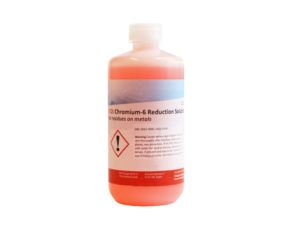
The EPA maintains an active program called the Contaminant Candidate List (CCL) to identify contaminants in public drinking water that warrant detailed study.The level in which they are found in source waters is very small in comparison. While this metal may be detected at very low levels in source waters, people regularly consume or expose themselves to products containing this metal in much higher concentrations (i.e., chrome fixtures, metal pots and other chromed items around the home).The fact that a substance is detectable does not mean the substance is harmful to humans.Water industry professionals are researching the occurrence of Hexavalent Chromium in drinking water supplies and are monitoring for the development of any new regulations from Federal or State agencies.

The current drinking water standard sets the maximum contaminant level (MCL) of total chromium allowed in drinking water at 100 parts per billion (ppb), also equivalent to 100 micrograms per liter (ug/L). This standard addresses all forms of chromium, including chromium-6. Yes, your water is safe to drink! As noted above, chromium-6 is currently regulated as part of the 'total chromium' drinking water standard under the Federal Safe Drinking Water Act (SDWA). Raleigh Water is committed to protecting public health and ensuring the safety of the drinking water for our customers in Raleigh and the surrounding communities of Garner, Knightdale, Rolesville, Wake Forest, Wendell and Zebulon.

Concerns about the health impacts of chromium-6 have been highlighted by contamination levels measured in cities like Hinkley, California. Where Chromium-6 Is FoundĬhromium-6 tends to be predominately found at highest levels in groundwater because of industrial contamination, or naturally occurring mineral deposits.
#Chromium 6 full
To put that in perspective, one ppb is one drop of water in a full Olympic-size pool. The new standard, or maximum contaminant level (MCL), is 10 parts per billion (ppb). California is the first state in the nation to establish a regulation specific to chromium-6, demonstrating a proactive response to a public health concern. On July 1, 2014, the State Water Resources Control Board - Division of Drinking Water standard for hexavalent chromium (chromium-6) took effect. CCWD water is in compliance by a large margin.


 0 kommentar(er)
0 kommentar(er)
